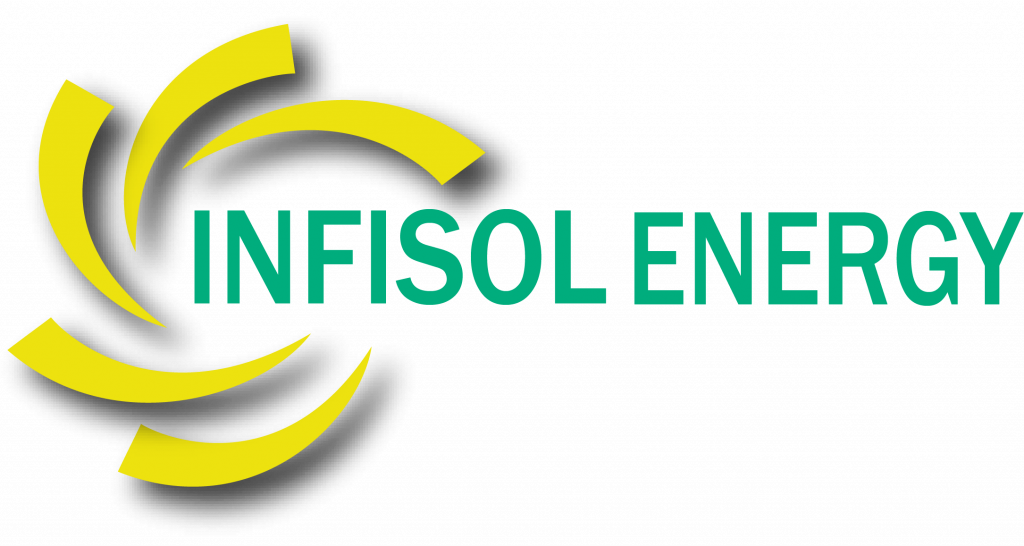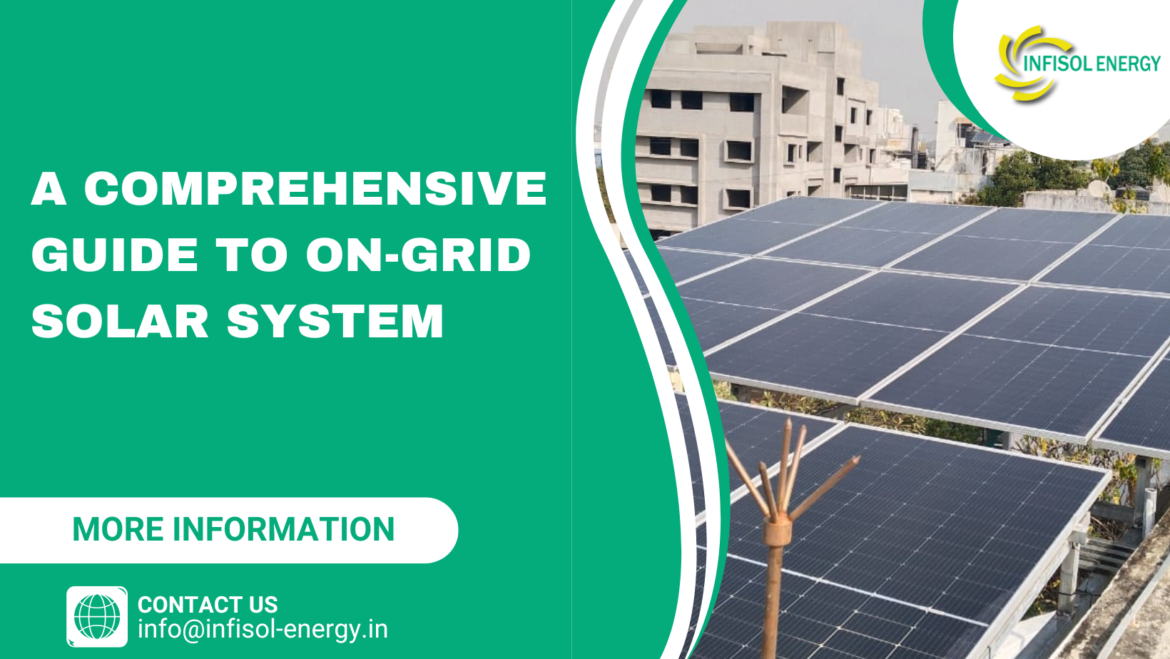Thinking about using solar power at home or your business? Installing an On Grid Solar System is the best Option. These devices are connected to your power line, so you can use electricity even when it’s cloudy. They generate electricity from the sun, which lowers their power cost and benefits the environment.
An on grid setup simply requires solar cells, a charger, and a meter. Do you want to learn more about grid-connected solar systems to determine whether they’re perfect for you? Read this blog content thoroughly!
What is an On Grid Solar System?
On-grid solar systems, also known as grid-tied systems, connect to the electricity grid. These solar panels generate energy and deliver excess power to the grid. Homeowners and business owners can reduce their carbon footprints and energy expenses.
Homeowners wishing to save money and generate electricity frequently establish a grid-connected solar system. With the aid of an inverter, solar energy is converted from DC to AC.
An environmentally responsible firm can accomplish its objectives and reduce energy expenses by building a grid-connected solar power system.
Types of On Grid System
Panel installation locations may categorise on grid solar systems. The two primary kinds are:
- Rooftop: Rooftop solar system technology involves installing solar panels atop structures. It’s popular because it maximises roof area and may look excellent. It can conserve energy by producing electricity nearby.
- Ground Mounted: Ground-mounted solar panels are popular in fields and other open locations. These systems may be much larger than rooftop systems since they are not roof-limited. They need more installation personnel but are a suitable alternative to solar panels for tiny or undesigned roofs.
How Does an On Grid Solar System Work?
On grid solar systems are linked to a municipality’s utility grid. Solar panels on the ground or roof convert sunshine into electricity. With an inverter, DC power can be converted to AC. Residential and commercial electricity is supplied by alternating current. Solar panels provide the grid with some of their daytime excess electricity.
Net metering tracks power consumed and returned to the grid. Customers can credit surplus energy to their accounts to lower future electricity costs. Due to ample sunshine and high power bills, grid-connected solar systems are becoming more popular in India.
Supplying more electricity back to the grid can decrease power costs. It creates power cheaply and reduces dependency on non-renewable energy.
| Now, you might think about how to install an On Grid Solar System. Don’t Worry! Just contact us, and you will be able to install this system. |
Components of On Grid Solar System
Solar panels convert solar energy into electricity. DC energy is converted to AC power using bi-directional inverters for place-based usage. However, numerous factors must be present for this to function. Details are here:
PV modules/Panels
An on grid solar power system uses PV modules. These rooftop or ground-mounted solar panels generate electricity from sunshine. Each panel is made of silicon photosolar cells. Certain materials absorb sunlight to generate direct current power using the photoelectric effect. Solar panel energy output depends on temperature, orientation, and sunlight intensity.
Residential solar panels typically provide 250–400 watts per hour. Annual energy usage and installation space determine how many solar panels a residence requires. Before choosing photovoltaic modules for your on grid solar system, assess your power and space needs.
AC Breaker Panel With Fuses
An AC breaker panel with fuses is required for a grid-connected solar system. The bi-directional inverter distributes solar power. The inverter and filter on the panel govern the house’s AC power quality and consistency.
Fuses prevent electrical surges and overloads. Air conditioning breaker panels with fuses are usually near the main electrical panel, making them easier to incorporate. It is essential to any well-planned on grid solar power system because of its durability and utility.
The Cost Controller
Overcharging can damage the battery bank and collapse the on grid solar system, but the cost controller can avoid this. The battery will slow down or stop charging after total capacity to prevent overcharging.
Battery banks and PV systems last longer. Specific charge controllers stop power when battery voltage drops to avoid hazardous rapid depletion. Charge controllers are essential to battery life and solar system performance.
Electrical Meters
On grid solar systems need electrical meters to measure power production and consumption. Two meters are used in this procedure. The first meter measures utility company electricity, while the second measures solar power. To save money, owners can track their power use.
This data may be used to calculate excess energy credits, payments, and grid energy consumption. These meters measure solar system efficiency and detect issues immediately.
Security Switches and Cabling
To ensure system dependability and safety, residential solar systems must be connected to the grid using security switches and cabling. Isolation and control switches separate the AC and DC sides of the bi-directional inverter for testing and maintenance.
However, the solar system is connected. Cabling must be appropriately sized, installed by a professional, and routed to prevent interference and damage.
Electrical energy grid
Installing grid-connected solar panels needs power. Solar credits for delivering extra power into the utility grid may help you reduce energy expenditures. The grid pays solar panel owners for their power via net metering.
Net metering lets you borrow electricity from the grid when your solar panels aren’t generating enough. The grid-connected solar system will power your place even when the sun isn’t shining or energy demand is high.
Advantages of On grid Solar System
An on grid solar system has several advantages, including a cheaper cost owing to fewer components. Turning to solar electricity for residential usage has environmental and economic advantages that surpass the initial PV system investment.
- Constant energy flow: A grid-connected solar System will power your place even on cloudy days. To boost system performance during power outages, add a battery bank. You can use the grid whenever you need electricity.
- Cost Saving: Solar power can lower energy costs and save you monthly money. All these little savings add up. Solar power projects can be profitable for you.
- Fulfil energy requirements: Home solar panels can provide all the power you need daily. Your solar supplier will size your on grid system based on your electricity demand to reduce the time you need to connect to the grid.
- Reduces fossil fuel: Residential solar power installations connected to the grid are eligible for government funding owing to rooftop solar’s environmental advantages. Solar electricity reduces fossil fuel consumption and greenhouse gas emissions.
On Grid Solar System Price in India
Indian on grid solar system prices depend on subsidy amount, location, and availability. While estimates are essential, a professional solar supplier may customise a price to meet your requirements. Most Indian homes employ on grid systems because of their adaptability and net metering returns.
1-kW on grid solar systems cost roughly Rs. 66,999, while 10-kW systems cost over 4 lakhs. Geography and other variables may significantly impact these costs. On grid systems are pricey upfront but save money over time.
Who Should Install the On Grid System?
On-grid solar systems may benefit the following groups:
- Residential: Connected solar panels may lower monthly electricity expenses, boost energy independence, and lessen environmental effects. Rooftop solar panels can power most household appliances and devices.
- Commercial: Offices, small stores, and major enterprises get benefit from grid-connected commercial solar power systems. By producing power, businesses can show their corporate social responsibility, save money, and hedge against increasing energy costs.
- Industrial: Grid-connected solar systems may minimise industrial energy demand and grid dependence. One option is solar panels on roofs or unoccupied ground near energy-intensive companies like warehouses and factories. They can save money on power and reduce their environmental impact.
Alternative of On Grid System
An alternative to the On Grid system is the Off-Grid system. Electricity systems that store solar electricity in batteries are called “off-grid” power systems. They are self-sufficient since they can operate independently of the grid.
Due to its high cost, battery needs, and specialised equipment, not everyone can afford or use an off-grid system. Unlike this, an on grid system is linked to the electrical grid.
They are cheaper, more straightforward to install, and can return excess energy to the grid. Consider your energy usage, geography, finances, and blackout backup needs when choosing between on grid and off-grid power sources.
Why Choose The On Grid System Compared To Other Types Of Systems?
Many factors make the On-Grid system preferable:
- Cost Saving: On-grid solutions can minimise your monthly energy bill by producing solar power. Another benefit is that you may sell extra energy to the grid.
- Reliability and Convenience: On-grid systems supply power reliably, which is handy. They can use grid power at night or on gloomy days when solar energy is limited.
- Lower Initial Investment: Because on grid solutions need less costly battery storage, they require less upfront investment. Because on-grid solutions don’t need expensive battery storage, you can still profit from solar power while conserving money.
- Environmental Benefits: On grid systems can share surplus renewable energy, which is environmentally friendly. This reduces your environmental effect. Doing this can reduce our fossil fuel use and create a better future.
Conclusion
On-grid solar systems reduce environmental impact and power bills. Their grid-connected design eliminates the need for backup batteries and provides continuous power. Though expensive, it can decrease your power expense in half.
These systems are available in various sizes for commercial and residential use and are easy to install. Installing grid-connected solar panels is an excellent start to a sustainable energy future.
FAQS
What is an on-grid solar system?
On-grid solar panels power a home or business using the existing power infrastructure. Your monthly power cost can decrease due to surplus energy returned to the grid.
Do I need batteries with on-grid solar?
No, Grid-connected systems don’t need batteries. When it’s cloudy, they use grid electricity.
Is on-grid solar expensive?
Despite a sizable initial investment, you’ll save money on power costs.
Is on-grid solar easy to install?
Yes, on-grid systems are more straightforward than you think. They use a few essential things for installation.
Is on-grid solar right for me?
If being green and saving money on power bills are your top objectives, consider on-grid solar.

